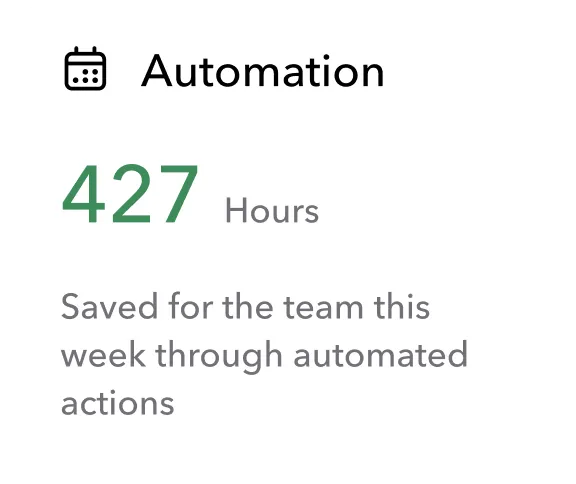Employee engagement apps enhance communication, boost productivity, and improve job satisfaction.
This article will explain what these apps are, their key benefits, and the top choices for 2024.
Key Takeaways
- Employee engagement apps improve communication and productivity, fostering a positive work environment and enhancing employee connections.
- Key features of effective engagement apps include user-friendly interfaces, integration capabilities, and robust analytics for informed decision-making.
- When selecting an employee engagement app, organizations should assess specific workforce needs, consider integration potential, and prioritize effective onboarding and continuous feedback.
What Are Employee Engagement Apps?
Employee engagement mobile apps are mobile applications designed to enhance workplace communication and improve employee productivity. These employee engagement platforms aim to foster better relationships, allow employees to voice concerns, contribute ideas, and reward achievements, all of which significantly enhance the overall employee app experience.
These employee mobile apps aim to enhance employee satisfaction and communication by incorporating functionalities like chat features, task management, and access to company resources, promoting a more engaged and connected workforce.
The convenience of using smartphones ensures that employees can communicate and collaborate effectively from anywhere, reducing feelings of isolation in remote or hybrid working conditions.
Key Benefits of Using Employee Engagement Apps
Investing in employee engagement software has numerous benefits, starting with the creation of a positive work environment. These apps facilitate timely recognition and feedback among employees, which is crucial for maintaining high morale and job satisfaction.
These platforms help build stronger connections among team members by promoting company culture and values, leading to a more cohesive and productive workforce.
Employee engagement apps significantly improve communication by connecting dispersed workers and ensuring they receive timely and relevant information, which streamlines communication and minimizes frustration. This enhanced communication leads to higher engagement levels and, consequently, improved employee engagement, improved profitability, and reduced turnover costs.
These apps can also boost productivity by reducing the time employees spend searching for information and fostering a stronger bond with the organization through personalized communication features. Engaged employees are more likely to stay with the company, significantly reducing turnover rates and associated costs.
Essential Features of Top Employee Engagement Apps
Choosing apps with the right features is essential to fully benefit from employee engagement software. Effective employee engagement solution apps should include tools for communication, recognition, and task management, enhancing visibility and accountability within the organization.
Mobile-friendly designs ensure that employees can engage and interact conveniently, boosting overall user and employee experience too.
User-Friendly Interface
A user-friendly interface is a key feature that can significantly improve the adoption rates of employee engagement apps. Officevibe, for example, is praised for its intuitive design and actionable insights, making it easier for employees to navigate and use effectively.
An easy-to-use app encourages regular engagement, enhancing overall productivity and satisfaction.
Analytics and Reporting
Employee engagement apps with robust analytics help identify trends and areas for improvement, facilitating strategic decision-making. Glint, for instance, is known for its sophisticated analytics and actionable recommendations, enabling managers to make data-driven decisions.
Top employee engagement apps display data clearly. This clarity makes it easy to understand and take action. Officevibe, for example, offers tools for pulse surveys, onboarding surveys, and eNPS scores to understand employee sentiment, while Workvivo provides insights into employee behavior, engagement patterns, and platform usage. The best employee engagement software enhances these capabilities further.
These analytics help track content performance and measure engagement with company communications, ensuring that organizations can continuously improve their engagement strategies.
Top Employee Engagement Apps
As we look ahead to 2025, several best employee engagement apps stand out for their unique features and benefits. Top contenders include:
- Teambridge
- Workvivo
- Bonusly
- Culture Amp
- Officevibe
Each of these apps caters to different organizational needs, from frontline workers to large enterprises and performance management.
Choosing the right app depends on your specific requirements. Teambridge, for example, is tailored for frontline workers, while Workvivo excels in large organizations. Bonusly focuses on employee rewards, and recognition, Culture Amp on performance management, and Officevibe on gathering employee feedback.
Let’s delve deeper into the unique offerings of each app.
Teambridge – Best for Frontline Workers

Teambridge is recognized as the best employee engagement platform and app for frontline workers, providing tailored features to meet their unique needs. It offers a comprehensive platform that allows frontline workers direct access to vital workplace information and resources, such as company updates and secure communication channels. This ensures that even those who are not desk-bound can stay connected and informed.
For managers, Teambridge provides essential metrics that help track employee engagement, satisfaction, and retention, facilitating better decision-making. By offering tools that cater specifically to frontline workers — such as flexible PTO tracking, automated reminders, and team chat — Teambridge helps bridge the communication gap and ensures that all employees feel valued and included.
Workvivo – Best for Large Organizations

Workvivo aims to reach and engage the entire workforce, making it particularly beneficial for large organizations. It is recognized as the best app for large, multi-lingual organizations, effectively connecting diverse teams and fostering an inclusive corporate culture. The auto-translation feature, for example, allows seamless communication for multi-lingual teams.
Workvivo also offers community and social features to enhance employee engagement, including public shoutouts to recognize and celebrate achievements. Workvivo integrates with video conferencing tools like Zoom and provides live-stream functionality for real-time company updates, simplifying and streamlining internal communication.
Bonusly – Best for Rewards and Recognition

Bonusly is acknowledged as the top application for rewards. It excels in the area of employee recognition and custom rewards. It allows employees to reward their peers with points, which can be exchanged for various rewards, fostering a culture of appreciation and recognition within the organization. This peer-to-peer recognition system enhances company culture by sharing recognition in a company-wide feed.
However, a potential challenge with Bonusly is its cost, which may be pricey based on the number of users. It offers a free trial, allowing organizations to assess its value before committing.
By focusing on rewards and recognition, Bonusly helps boost employee engagement and satisfaction.
Culture Amp – Best for Performance Management

Culture Amp is regarded as the best app for performance management due to its extensive features. It includes tools for 360-degree feedback, goal-setting, and performance reviews through 1-on-1 meetings, making it a comprehensive solution for managing and improving employee engagement and performance. Culture Amp specializes in gathering and analyzing feedback, which enhances workplace performance and helps organizations maintain high engagement levels.
The app also uses employee engagement surveys for regular sentiment monitoring and to assist in onboarding and offboarding. Culture Amp’s pricing structure includes three tiers (Engage, Perform, and Develop), though users may find navigating its extensive features challenging.
Officevibe – Best for Employee Feedback

Officevibe offers performance management and recognition tools, as well as employee management software such as feedback tools such as pulse surveys and eNPS scores. It provides tools to analyze employee feedback trends and improve the overall work atmosphere. Continuous feedback gathered through Officevibe helps organizations understand and address employee needs effectively.
However, users of Officevibe have expressed a desire for more depth in collecting employee feedback through surveys questions and customization in reporting. Despite these challenges, Officevibe remains a top choice for organizations seeking to gather and act on employee feedback to improve engagement and satisfaction.
How to Choose the Right Employee Engagement App
Selecting the right employee engagement app requires careful consideration of several factors. Start by identifying initial use cases that create genuine value for users. Understand the specific needs and challenges of your workforce and choose an app that addresses these effectively.
Then, consider whether to opt for a custom or off-the-shelf app. Custom solutions can take up to 18 months to develop and may be costly, while off-the-shelf options offer quicker implementation and lower costs. Additionally, evaluate the app’s integration capabilities with your existing intranet systems and communication tools to ensure seamless operation.
Security is also crucial. Establish guidelines for content within the app and the overall hosting environment to ensure compliance with privacy regulations.
Finally, a structured rollout strategy, including employee training sessions and clear communication of benefits, is vital for successful app adoption. Engaging content that is relevant and created by employees themselves can also enhance user adoption and satisfaction.
Implementing Employee Engagement Apps: Best Practices
Implementing an employee engagement app successfully involves several best practices to engage employees. These include making app usage voluntary to enhance engagement, conducting employee surveys, sending targeted and relevant content, and ensuring compliance with privacy regulations.
Generating excitement during the app rollout and collecting user feedback to refine the app based on employee input are also important steps.
Effective Onboarding
Successful implementation of an employee engagement app hinges on effective onboarding. Involving employees in the app’s development can facilitate a smoother onboarding process. Engagement Multiplier, for example, is praised for its simplicity and ease of use, which enhances user experience.
An onboarding center acts as a centralized hub for resources, training materials, and information, ensuring new employees have everything they need to get started. Testing the app before a full launch allows for gathering initial feedback and making necessary adjustments, ensuring a smooth transition.
Continuous Feedback
Collecting continuous employee feedback is vital for maintaining high engagement levels in the workplace. Regular collection of user feedback enables ongoing iterations that enhance the app’s effectiveness and user satisfaction. Feedback tools enable employees to share their thoughts, contributing to a culture of open communication.
Responding to feedback fosters a responsive environment and strengthens employee engagement. Tools such as pulse surveys and eNPS scores are instrumental in gathering continuous feedback and making informed improvements.
Regular Updates and Training
Regular content updates and ongoing training are crucial for keeping an employee engagement app relevant and engaging. Regular training ensures employees remain proficient in utilizing the app’s features and capabilities. This continuous improvement approach helps employee apps sustain high engagement levels and ensures the app continues to meet the evolving needs of the workforce.
Measuring the Impact of Employee Engagement Apps
Measuring the impact of employee engagement apps is crucial for understanding their effectiveness and making improvements. Built-in analytics features in these apps enable organizations to track employee sentiment and engagement levels. Monitoring app usage and feature utilization provides companies with valuable insights into their workforce’s behaviors and preferences.
Retention rates, collaboration metrics, and others measuring employee engagement and well-being are also important indicators of an app’s impact. For example, tracking engagement with wellness features and feedback on work-life balance can provide insights into employee well-being. These metrics help organizations make data-driven decisions to enhance employee engagement and overall productivity.
Common Challenges and Solutions
Despite their benefits, employee engagement apps can present several challenges. Usability issues, integration difficulties, and steep learning curves are common problems faced by users.
To overcome these challenges, organizations should choose apps that offer comprehensive support and training. Implementing BYOD (Bring Your Own Device) policies can also enhance engagement by improving accessibility. Ensuring effective communication tools and addressing integration issues early on can help mitigate these challenges and maximize the app’s benefits.
Summary
Employee engagement apps are powerful tools that can transform workplace dynamics by enhancing communication, recognition, and overall employee satisfaction.
By understanding the benefits and key features of these apps, organizations can make informed decisions about which platform best meets their needs. From Teambridge’s tailored features for frontline workers to Workvivo’s comprehensive tools for large organizations, there is an app for every requirement.
Implementing these apps successfully involves careful planning, effective onboarding, continuous feedback, and regular updates. By measuring their impact and addressing common challenges, organizations can ensure these tools contribute to a positive workplace culture and high employee engagement levels.
Frequently Asked Questions
What are employee engagement apps?
Employee engagement apps are tools that enhance workplace communication and productivity by enabling employees to voice concerns, share ideas, and receive recognition. These employee engaged apps foster stronger relationships within the workplace.
What are the key benefits of using employee engagement apps?
The key benefits of using employee engagement apps are improved communication and increased job satisfaction, leading to reduced turnover rates and enhanced company culture, ultimately resulting in higher productivity.
How do I choose the right employee engagement app for my organization?
To choose the right best employee engagement solution or app, prioritize initial use cases, cost, integration capabilities, and security guidelines, while also ensuring you involve employees in the selection and onboarding process for better adoption. This comprehensive approach will lead to a more suitable and effective tool for your organization.
What features should I look for in an employee engagement app?
An effective employee engagement app should offer a user-friendly interface, seamless integration with your existing tools, robust analytics, strong communication capabilities, and effective recognition systems. These features will help enhance overall engagement and streamline interactions within your organization.
How can I measure the impact of an employee engagement app?
To effectively measure the impact of an employee engagement app, utilize its built-in analytics to track key indicators such as employee sentiment, engagement levels, employee retention rates, and collaboration metrics. This data will provide valuable insights into employee well-being and work-life balance, enabling targeted improvements.











